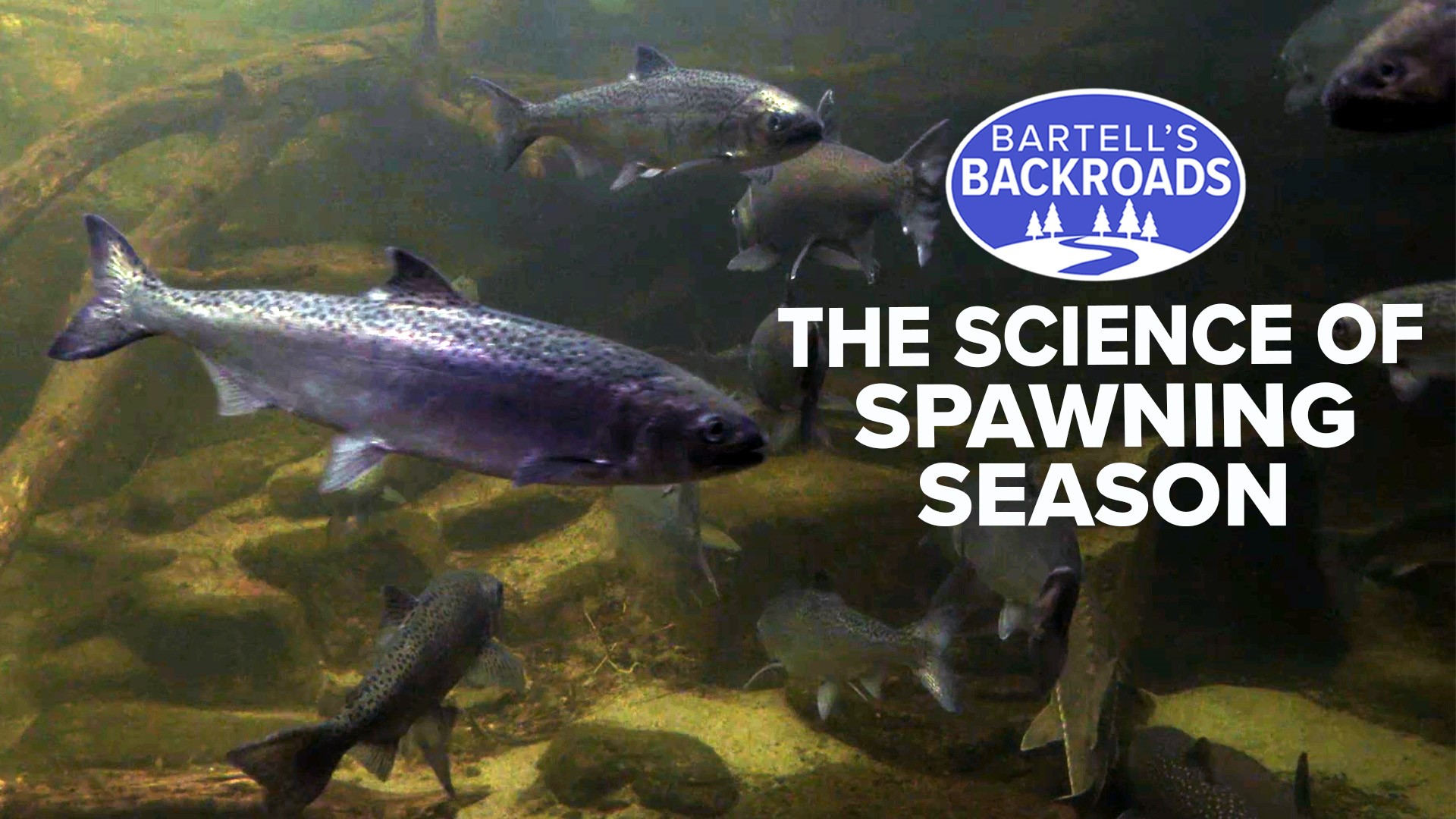NIMBUS, Calif — Editor's note: Due to the graphic nature of this story's video, viewer discretion is advised.
During the fall and winter months, the American River Nimbus Fish Hatchery is full of life. Salmon and Steelhead are spawning, and visitors can catch a glimpse of the fish making their way up the hatchery’s fish ladder. Nimbus Fish Hatchery is one of the most visited hatcheries in the state. It’s completely free and every year thousands of people come to watch the spawning process.
There is, however, a sad ending at the end of the fish ladder. Nearly all of the salmon that pass through the gate will be euthanized.
Colin Purdy, with the California Department of Fish and Wildlife, explains it’s a necessary process for population management.
“It might appear a little gruesome, but this is how we harvest eggs and milt and spawn the salmon for the next generation,” says Purdy.
When adult salmon are ready to breed, they leave the ocean, head upriver where they were born, lay eggs and then die.
“This is a mitigation facility. We are trying to supplement what is already out in the river,” says Purdy.
Manmade structures like dams make it extremely difficult for salmon to swim upstream. It’s the California Fish and Wildlife Department's job to manage the fish population. They do that by catching a small number of salmon and steelhead, then grow their eggs in a controlled environment and release the babies back in the river.
Salmon only produce eggs once in their lives and the eggs have to be removed immediately after the fish are killed. Once the eggs are removed, hatchery worker squeeze sperm — or milt as it's called — out of male salmon and mix it with the unfertilized eggs, and there are a lot of eggs in each fish.
“Anywhere from 4,000 to 5,500 eggs,” says Purdy.
Steelhead are a little different. Steelhead spawn multiple times over the course of their lives, so they are not killed. The eggs and sperm are humanely removed, then the fish are returned to the water.
Eventually, eggs from both salmon and steelhead end up in the hatchery's sophisticated fish egg incubators. In about 90 days they will hatch, and when they get big enough, they will be released back into the American River to repeat the cycle all over again.
Part of that cycle involves research. When salmon are released from the Nimbus Hatchery, a special information tag is implanted in their nose. That tag stays with the fish their entire life, and when they die field survey workers like Austin Galinat scour the banks of the American River looking for dead hatchery fish with a tag.
“Then the hatchery can identify where these fish were raised, how old they are, et cetera,” says Galinat.
The data collected from the tags in the fish help the California Department of Fish and Wildlife set limits for how many salmon fishermen can catch. Drought and climate change negatively impact salmon and steelhead populations, and the data collected from both the field surveys and the hatchery help with the overall management of the population.
“You've got to remember there is a huge amount of the salmon population that is being harvested out in the ocean. So, there are so many pieces of information that we use for population management,” says Purdy.
The euthanasia process may be hard to stomach but the death of a few fish helps the population as a whole. Just in case you are wondering, the dead hatchery fish don’t go to waste. Many end up at local food banks around the state.



















